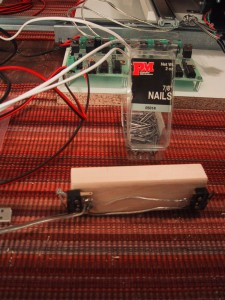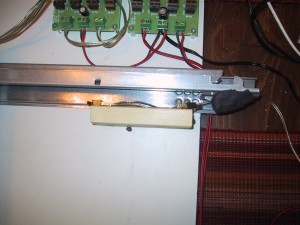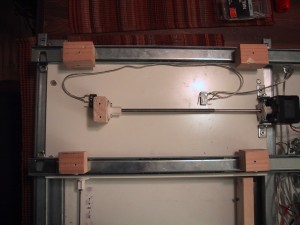Limit Switches: Important!
I have added limit switches to my X and Y axis. I always planned on adding them eventually, but after I stripped the nylon threads on one of my flange nuts in a router accident I decided that it was time. I’m using small micro-switches mounted such that they are closed when the X or Y axis nears the maximum extend of it’s motion. The ocean controls serial stepper controller has ports for limit switches on each axis, and when the circuit is closed that axis immediately stops moving and can only be moved one step at a time until the circuit opens again. I mounted the X-axis switches on a piece of wood from my 8 foot board I had to buy for the Y-axis pusher assembly (7.8 feet left!). I can’t decide what makes the router look more ghetto: The Ikea drawer rails, or the 45 degree screws holding the piece of wood down. (Also in the running is the blob of black epoxy-putty that pushes one of the X-axis limit switch.) The Y-axis limit switches didn’t need a piece of wood to position them because the Y-axis pusher block travels close enough to the top of the X-axis moving platform that I could just attach them to it directly. Note that because the local hardware store didn’t have any wood screws small enough to go through the small holes on my micro-switches that I had to use brads (nails) to attach them.
If you look closely at the picture above of the Y-axis limit switches, you can see that the Y-axis servo has a (broken, thread-stripped) flange nut laying about the rod near the servo motor. This was the original (and now broken) y-axis flange nut, and the current operational flange nut has been stolen from my Z-axis actuator.


